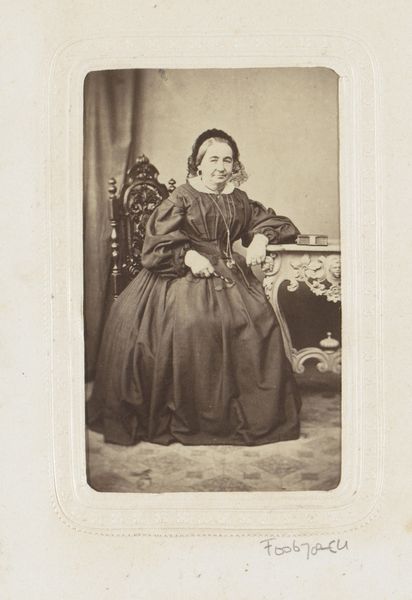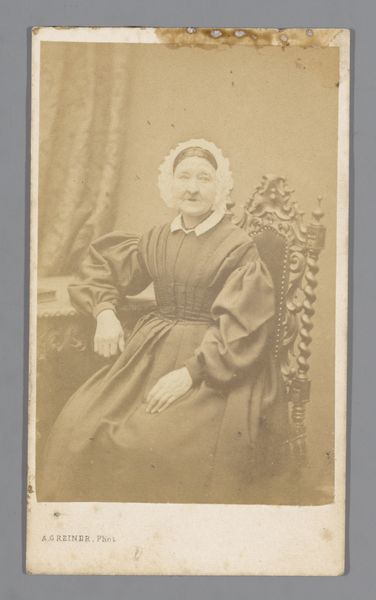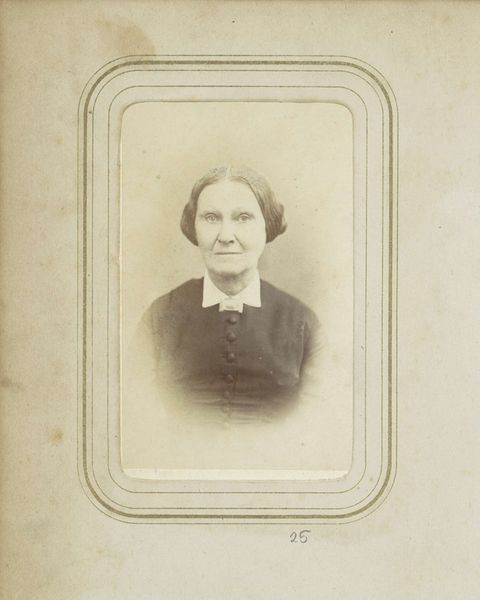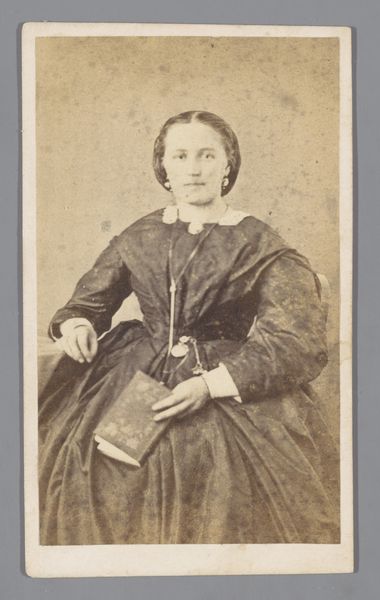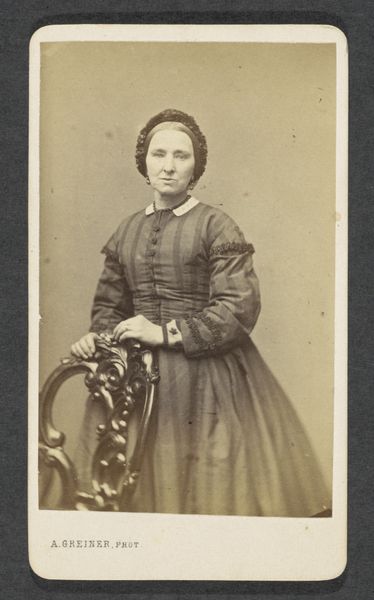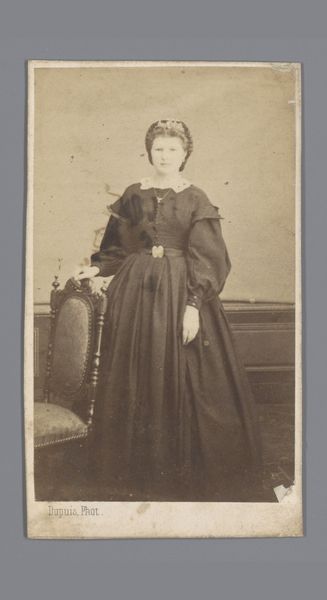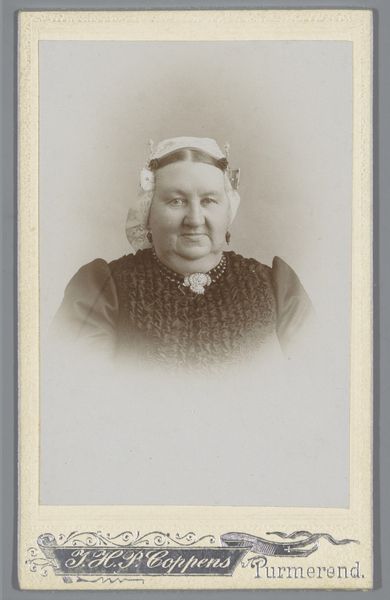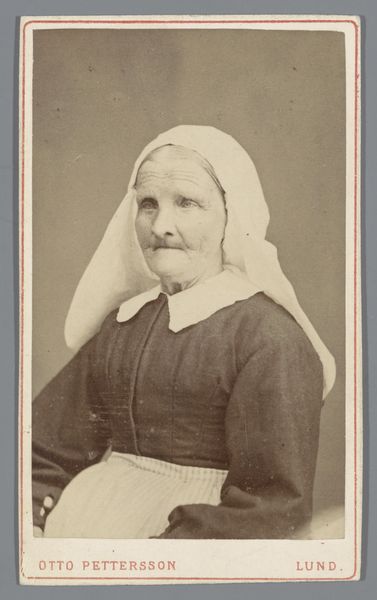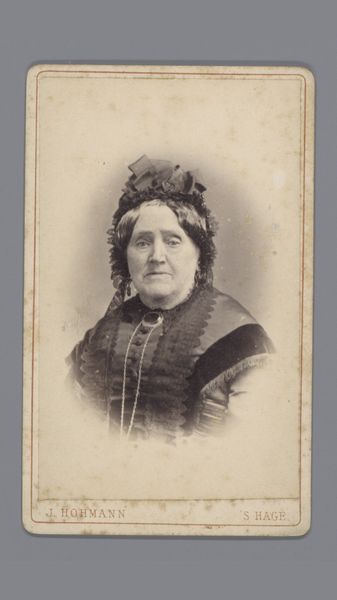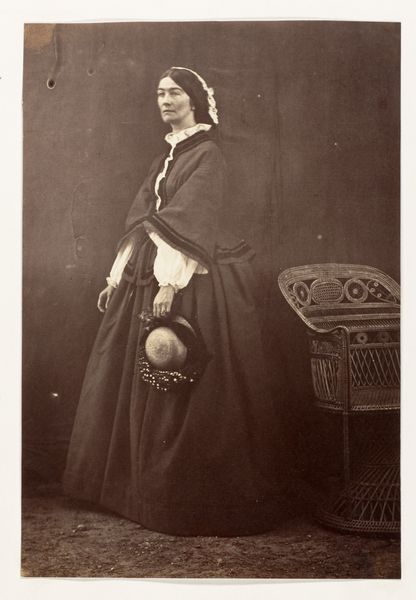
photography
#
portrait
#
photography
#
genre-painting
#
realism
Dimensions: height 105 mm, width 62 mm
Copyright: Rijks Museum: Open Domain
Curator: Here we have "Portret van een onbekende oude vrouw," or "Portrait of an Unknown Old Woman," a photograph taken by Louis Baudart sometime between 1865 and 1876. It's a captivating, if somber, image. Editor: My initial thought is that it has an ethereal, almost haunting quality. The way the light softens the subject gives it a dreamlike atmosphere, yet the details, especially in her face and bonnet, remain sharp and clear. Curator: Precisely. Photography in this period was becoming increasingly accessible, shifting from a scientific tool to a medium for personal expression and social documentation. Portraits like these became more commonplace, capturing a wider spectrum of society. This image may reflect changing societal norms and representation. Editor: And the clothing! Look at the textures. The bonnet, clearly handcrafted with lace and ribbon, suggests a certain status. The way it's constructed, the time and materials invested, speak volumes about her social standing and the value placed on such handicrafts during the period. Curator: Certainly. And her posture, somewhat formal and reserved, reinforces this sense of established societal role, a deliberate representation encouraged by the burgeoning photography industry eager to serve the growing middle classes. How do such depictions align or clash with more idealized, painterly portraits of the era, and what implications did this have for society’s values? Editor: Well, in contrast to painting, which always carries a level of idealization or stylization, photography presented itself as objective. But, in this portrait, that tension is powerful. Is Baudart showing us reality or creating an idealized version using "objective" means? The labor, of course, extended to the printing process, with technicians handling materials and crafting each print individually. It shows a whole structure of image production. Curator: A great point. How the distribution and viewing of such images impact on our understanding of Victorian-era family dynamics or the very notion of aging? Were such photographs widely circulated, and to what degree did they help shape public perceptions? Editor: Seeing how it has survived tells of how families cherished having these physical images to remember loved ones. It gives insights into what mattered materially in the past. A simple photograph holds so many threads connecting labor, materials, and social history together. Curator: Indeed. Baudart's "Portret van een onbekende oude vrouw" is much more than just an image. It is a fascinating cultural artifact that sheds light on photography's growing social influence. Editor: It makes you think about how much materiality and social circumstance influence representation—even with "objective" media. It's a remarkable blend of both worlds.
Comments
No comments
Be the first to comment and join the conversation on the ultimate creative platform.
